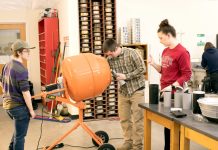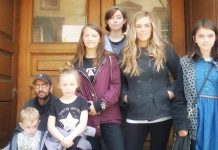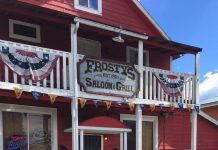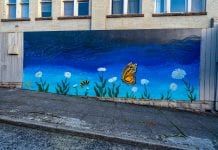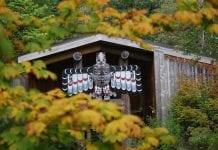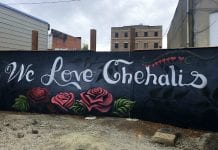
Centralia and Chehalis are full of history, as is every town and city in the world. Centralia, specifically, is home to some fascinating pieces of forgotten history. Local Lewis County residents know of the ruins at the S-curves near the railroad tracks in Centralia. However, few know of Centralia’s underground passage tunnel lumber mill workers used for safe travel to and from the old lumber mill that presently lies in rubble.

According to Executive Director of the Lewis County Historical Museum Jason Mattson, “The tunnels were for the mill workers to be able to get to work safely.”
That is also open to speculation, as is all information surrounding the underground tunnels.
The passage expands approximately a quarter of a mile to a mile from Ash Street in Centralia to the old lumber mill. The entrances today are in rubble or steel panels, barricading what is left of the opening. The passageway entries are inaccessible today, although parts of the tunnel may be intact.

Centralia Residents Recall Playing in the Tunnels
During construction at the S-curves area, parts of the tunnel were unearthed, filled with concrete, and then buried. Back in the 1990s, it was a little-known hang-out spot for kids, and since then, it has been blocked and forgotten about.
As per an interview with a resident who lived near the railroad tracks on Ash Street, “My friends and I used to play in the tunnels. We always walked around the area from the apartments we lived at, and we found the old boarded-up tunnel entrance with a hole just large enough for us kids to crawl down into. The tunnels were dark, and there were cracks where the light came through. Water was everywhere from rainfall. When we talked, it echoed off the walls. There were a lot of old things left behind. I don’t remember exactly what, only it all looked very, very old.”
The entrance of which the resident spoke is now a pile of boards and briar bushes. Every day, people pass over the expansion of this old underground passage, not knowing what is beneath their very feet — just as the old lumber mill ruins are slowly crumbling and withering away.

Were the Centralia Tunnels Used for Bootlegging?
Jason Mattson at the historical museum also said. “There have been many rumors about some downtown that may have been used for bootlegging, but I don’t have any proof of that.”
Also, according to the local libraries, bootlegging was the first thing the library manager brought up. Bootlegging was the illegal manufacture, distribution, or sale of goods, especially alcohol.
The underground tunnels seem to invoke more questions than answers. It is a piece of compelling history, with mystery and yet interesting speculative facts, as few as they may be.
Imagine workers about 100 years ago traveling to the old lumber mill through a dark and cold underground passage made of iron steel that was later left abandoned after a fire destroyed the mill in the 1920s.
The day the old lumber mill was reduced to rubble, the tunnels became the quickly forgotten underground road with entries boarded up and left to decay. To this day, no one knows if the tunnels are still standing. However, according to two residents who hung out in the underground hall, the tunnels were built with thick steel beams and panels holding up the walls and ceiling. The channels were dark, gloomy, cold, and wet, with water droplets dripping from the cracks in the steel ceilings and were rather echoey.
If you walk or drive by the old S-curve ruins, think of not only the fire that destroyed them but also of the underground tunnel that connects two pieces of important history. It’s a local history story of human ingenuity and loss.
Why the workers used the tunnel for safe travel is unknown and open to speculation. Perhaps safe from unscrupulous people, wild animals, trains, or a means of a quick, effortless way to and from work.

So Many Unanswered Questions About the Centralia Tunnel
Why are there little to no records of Centralia’s tunnel? No one knows.
Did bootleggers use the tunnel? Perhaps, given the passageway’s seclusion. The tunnel doesn’t travel very far, but maybe it was just out of sight from authorities.
What is clear is that the tunnels and the old lumber mill are connected, and as the mill slowly fades, so do the tunnels.
The relatively recent construction in the area revealed a portion of the tunnels, which were then re-buried. Only one historical photo remains of one of the entrances was taken in 1968. In the photo, you can see workers and a metal rail around a boarded-up platform covering the entrance to the tunnel below.
The old lumber mill raises many questions as well. With so many speculations and rumors, it’s another piece of Lewis County History that begs answers yet produces more questions.
Why did the workers need to use a tunnel for safe travel, considering the immense construction of the steel underpass? Did the bootleggers use the tunnels? Did arsonists start the old lumber mill fire? Do the tunnels themselves still stand beneath our feet?
The investigation is ongoing.









